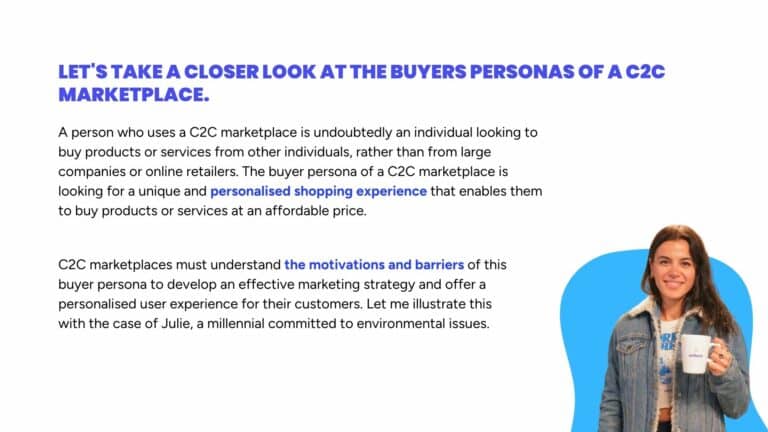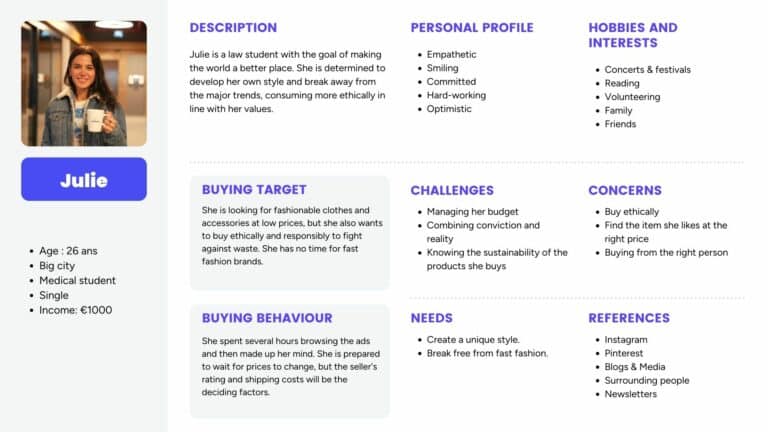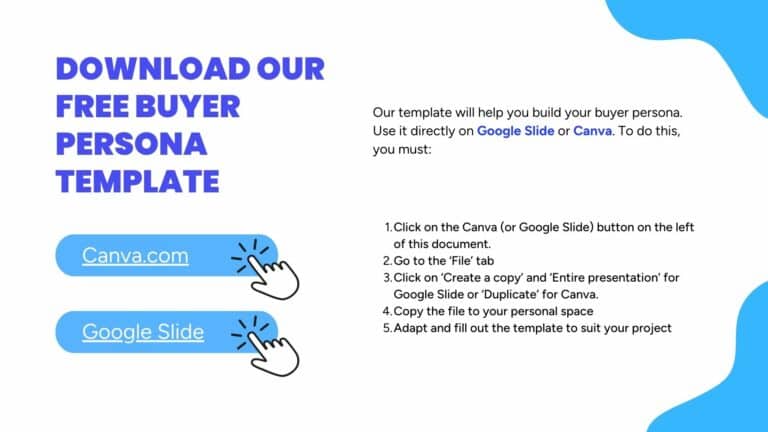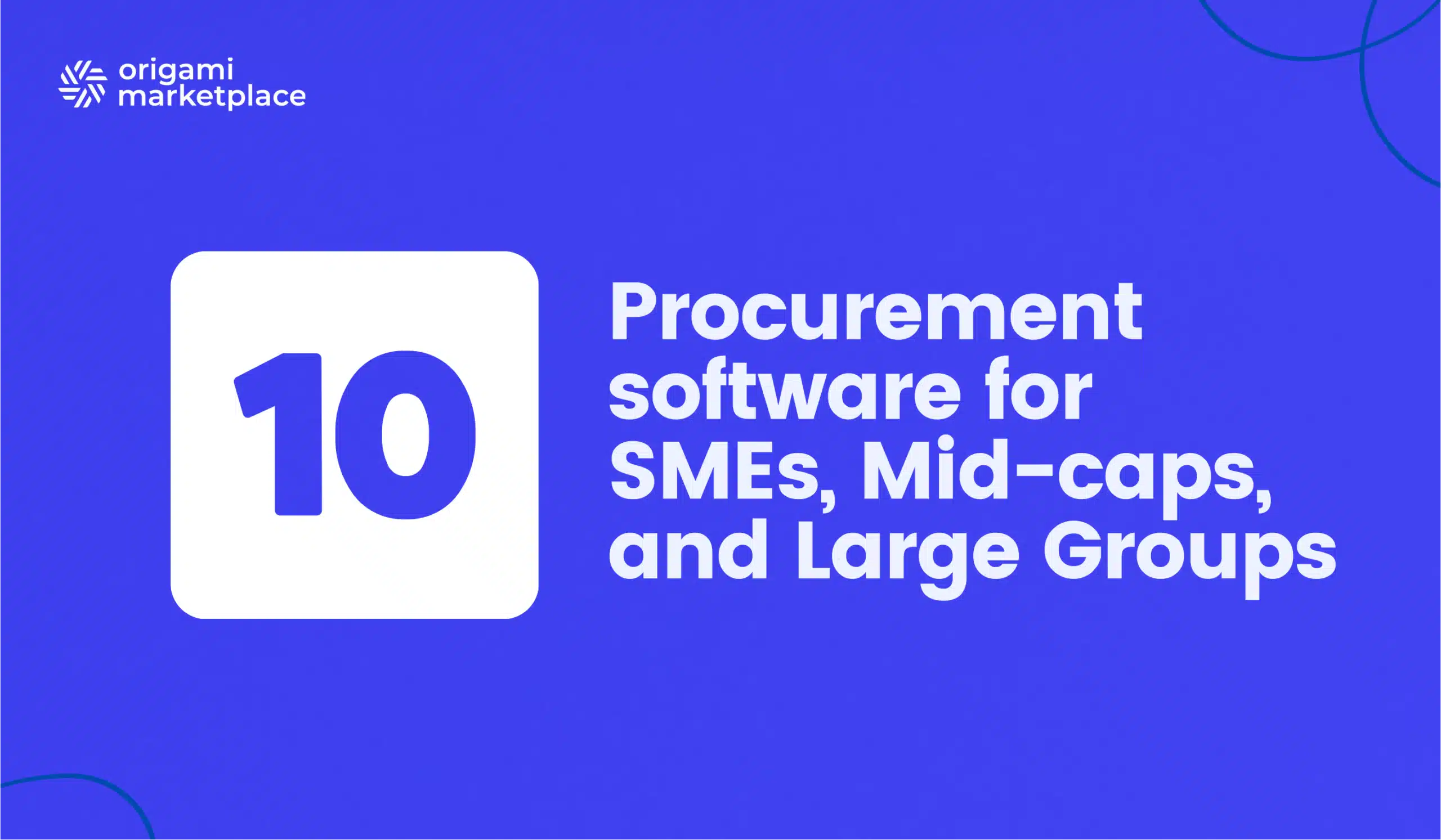How to build a marketplace: The ultimate 10-Step guide
- Arnaud
- 9 minutes reading

The online marketplace industry has been booming for over a decade, with experts projecting it to account for over 20% of all consumer spending by 2027. If you’re considering building a marketplace that could become the next big success story, now is the perfect time.
This comprehensive guide will walk you through the 10 essential steps to build a marketplace that not only stands out but also meets the needs of your target audience.
- What is an online marketplace?
- Why build an online marketplace
- Benefits of building a marketplace
- Types of online marketplaces
- How to build a marketplace in 10 steps :
- Step 1: Identify market demand
- Step 2: Define your target audience
- Step 3: Choose your revenue model
- Step 4: Select the right business model
- Step 5: Determine essential features
- Step 6: Assemble your development team
- Step 7: Plan and build your marketplace
- Step 8: Launch and maintain your marketplace
- Step 9: Common challenges and how to overcome them
- Step 10: Scale and optimize your marketplace
👋 No time to read the whole article? Find the summary here.
1. What is an online marketplace?
A marketplace platform is a space, often digital, that connects buyers and sellers to facilitate the exchange of goods, services, or information. It acts as an intermediary, providing a secure and structured environment for transactions. Unlike traditional businesses, a marketplace typically does not own the products or services it offers but serves as a centralized hub for users to interact. Common examples include Amazon, Alibaba, Airbnb, Uber, and Asos. These platforms are characterized by their multi-sided model, network effects, and various revenue streams such as commissions, subscriptions, or advertising.
« A marketplace can be compared to a virtual shopping mall, where sellers are invited to showcase their products in dedicated categories, handle packaging, and manage delivery, while the marketplace itself operates as the building, earning a percentage from each sale made within its space. »

Alexandre Duquenoy
→ Talk to our solutions expert
2. Why build an online marketplace?
Building an online marketplace can be a highly rewarding venture, both financially and strategically. Here are the key reasons why creating an online marketplace is a compelling idea:
High market potential: Online marketplaces are at the heart of the growing digital economy, with increasing reliance from both consumers and businesses for convenience and broader reach. They scale quickly by adding buyers and sellers without needing to maintain any inventory, making them highly efficient.
Network effects: The value of a marketplace grows as more participants join. This creates a positive feedback loop that attracts even more users, enhancing the platform’s relevance and market position.
Revenue opportunities: Marketplaces have diverse ways to generate revenue. They can charge commission fees on transactions, listing fees for showcasing products, subscriptions for premium features, and advertising fees for sellers who want better visibility.
Reduced operational complexity: Marketplaces don’t need to manage inventory or deliver services themselves. Instead, they focus on facilitating transactions, making them less capital-intensive compared to traditional retail businesses.
Meeting consumer cemand for convenience: Marketplaces offer centralized access, allowing consumers to meet multiple needs in one place, such as shopping on Amazon or booking accommodation through Airbnb. They also simplify the buying process with features like advanced search and filtering.
Empowering sellers: Sellers benefit from the exposure a marketplace provides, reaching a large audience without the need to build their own infrastructure. This makes marketplaces an appealing choice for vendors of all sizes.
Flexibility in niche selection: Marketplaces can specialize in specific industries or demographics, such as Alibaba for B2B transactions or Biked for niche items like bicycles.
Opportunities for innovation: Modern technology like AI, machine learning, and blockchain can be integrated into marketplaces to enhance user experience, improve trust, and streamline operations through features like personalized recommendations and secure payments.
Competitive advantage: A well-executed marketplace can dominate its industry, becoming the go-to platform and building a strong, recognizable brand with significant market share.
Global reach: Unlike traditional businesses, online marketplaces can easily expand to international audiences, breaking down geographical barriers for both buyers and sellers.
Long-term value creation: Established marketplaces often achieve high customer retention and loyalty, especially when they provide excellent user experiences, foster trust, and build strong community features.
3. Benefits of building a marketplace
Marketplaces have become a cornerstone of the digital economy, offering businesses a powerful platform to connect buyers and sellers while generating substantial value. Beyond their convenience and versatility, marketplaces present unique advantages for entrepreneurs and businesses looking to scale efficiently, diversify income, and attract investors. Here are the key benefits of building your own marketplace:
- Boosted revenue potential: Generate income through diverse monetization strategies, such as commissions, subscription plans, or listing fees.
- Resilient income streams: Multiple revenue channels create a robust buffer against economic shifts and market volatility.
- Lower financial exposure: Minimize risks by eliminating the need to manage inventory, warehousing, or logistics.
- Effortless scalability: Expand your marketplace offerings with minimal incremental costs, enabling sustained growth.
- Investor appeal & exit strategies: Marketplaces are highly attractive to investors, offering flexibility in exit options, such as acquisitions or IPOs.
4. Types of online marketplaces
When discussing marketplaces, terms like B2B or C2C often come up but what do they actually mean? These terms classify the various types of marketplaces based on their structure and purpose. Below, we’ll explore the main types of online marketplaces and how they differ.
Types of Online Marketplaces
B2B (Business-to-Business)
A platform where businesses exchange products or services with other businesses. This type is ideal for wholesale transactions or enterprise services.mCommerce (Mobile Commerce)
A marketplace optimized for buying or selling goods and services using mobile devices like smartphones or tablets, offering convenience on the go.Crowdfunding
Platforms that allow individuals or organizations to showcase projects and raise funds through community-driven campaigns.C2C (Customer-to-Customer)
A platform facilitating transactions directly between customers, such as buying, selling, or exchanging goods or services.eCommerce
Platforms that enable transactions between two parties, which can range from sellers and buyers to startups seeking investment.B2C (Business-to-Consumer)
A marketplace where businesses offer their products or services directly to individual consumers.Peer-to-Peer (P2P)
Platforms connecting users who provide products or services directly to others, often blending online marketplaces with offline services.Auction Platforms
Marketplaces where sellers list products with a deadline, and buyers place competitive bids. The highest bidder wins the item when the auction ends.
Examples of marketplaces by type
- C2C (Customer-to-Customer): Platforms like Etsy, GreenMusicians and Couchsurfing facilitate exchanges between individuals.
- B2C (Business-to-Customer): Well-known marketplaces such as AliExpress, Booking.com, and Buffet-Crampon operate in this category.
- B2B (Business-to-Business): Alibaba is a prime example, connecting businesses for large-scale transactions
- Services: Platformes like Uber, Malt or Upwork.
Horizontal vs. Vertical marketplaces
Marketplaces can also be categorized based on their scope and focus:
Horizontal Marketplaces
These platforms span multiple categories, providing diverse services like job listings, ridesharing, product sales, and apartment rentals. They cater to a wide range of user needs.Vertical Marketplaces
These specialize in solving one specific problem or addressing a single niche. For example, Airbnb focuses exclusively on temporary accommodation.
Vertical platforms often excel in their niche because they concentrate all their resources on optimizing for a specific user problem, delivering a superior experience tailored to that need.
5. How to build a marketplace in 10 steps :
Step 1: Identify market demand
Before launching your marketplace, ensure it addresses a real need. Here’s how:
- Analyze market trends: Study reports and industry insights to uncover gaps.
- Monitor social media: Use analytics tools to identify pain points and popular discussions.
- Test with marketing campaigns: Run targeted ads to explore untapped markets and validate ideas.
- Find your niche: Look for underserved areas or innovate on existing solutions.
Step 2: Define your target audience
A deep understanding of your audience will ensure your marketplace meets their needs.
- Research competitors: Learn who uses similar platforms and how they engage.
- Narrow your scope: Define who your audience isn’t to avoid wasted resources.
- Analyze existing data: If you already have followers, study their behavior and preferences.
- Use content analytics: Identify trending topics and popular search terms to align your offering.
How do you define the buyer persona of your online marketplace?
Defining your buyer persona is the foundation of your strategy. Discover our best tips, a complete example, and a template to fill out.




Step 3: Choose your revenue model
Your revenue model determines how your marketplace generates profit. Common options include:
- Commission-based: Earn a percentage of each transaction (a proven, lucrative model).
- Subscription plans: Offer memberships for access or premium features.
- Listing fees: Charge sellers to post their products or services.
- Advertising: Allow third-party ads on your platform for additional revenue.
- Freemium model: Provide basic functionality for free while charging for advanced features.
Step 4: Select the right business model
Pick a marketplace type that aligns with your goals and audience:
- B2C (Business-to-Consumer): Companies sell directly to individual consumers.
- C2C (Consumer-to-Consumer): Individuals transact with one another.
- B2B (Business-to-Business): Businesses sell products or services to other businesses.
- Services: Individuals or businesses offer professional expertise or skills directly to consumers or other businesses.
Step 5: Determine essential features
Equip your platform with must-have features while planning for future enhancements.
Core features:
- User profiles: For buyers and sellers.
- Search and filters: Enable users to find what they need quickly.
- Product listings: Include images, descriptions, and detailed specs.
- Reviews and ratings: Build trust within the community.
- Messaging system: Facilitate communication between users.
- Shopping cart and checkout: Simplify the purchasing process.
- Secure payment processing: Ensure transactions are safe and seamless.
- Order tracking: Keep users updated on their purchases.
- Customer support: Offer prompt assistance when issues arise.
Advanced Features:
- Augmented reality (AR): Allow users to visualize products in real-world settings.
- Voice search: Enable hands-free searches.
- Image search: Let users find products using uploaded images.
If you’re new to the world of marketplaces, you can find the complete list of essential features by following this link.
Download our free marketplace specifications template.
Here you will find all the essential features to succeed in your multi-vendor marketplace. This model provides a simple backlog to guide you through each step of your project.

Step 6: Assemble your development team
Your team is the backbone of your marketplace. Assemble it wisely.
Hiring options:
- Full-time employees: For long-term control and expertise (higher cost and commitment).
- Outsourcing: Use freelancers or agencies for flexibility and cost-effectiveness.
- Staff augmentation: Temporarily enhance your team with specialized external resources.
What to look for:
- Experience: Proven expertise in building similar platforms.
- Communication skills: Clear and responsive interactions.
- Quality assurance: Rigorous testing processes.
- Problem-solving skills: Creative and innovative approaches.
By choosing a SaaS solution like Origami Marketplace with its powerful workflows engine, you can save on human resources and efficiently manage your marketplace with just one or two people. If you’d like to discuss this further, one of our experts can explain everything to you for free and with no obligation.
Step 7: Plan and build your marketplace
A structured development process is key to success.
Development lifecycle:
- Discovery phase: Define goals, scope, and technical requirements.
- Business analysis: Draft user stories and technical specs.
- UI/UX design: Create intuitive, user-friendly interfaces.
- Development: Build the platform with robust coding practices.
- Quality assurance: Test for functionality, bugs, and security flaws.
Agile methodology:
- Break the project into manageable sprints.
- Regularly review and adjust plans based on progress and feedback.
Step 8: Launch and maintain your marketplace
Pre-launch:
- Comprehensive testing: Ensure every feature works seamlessly.
- Beta release: Launch to a small group to gather feedback and fine-tune the platform.
Post-launch:
- Marketing: Use SEO, content marketing, social media, and paid ads to drive traffic.
- Support: Offer exceptional customer service to retain users.
- Maintenance: Provide regular updates and improvements to stay competitive.
Step 9: Common Challenges and how to overcome them
Anticipate and tackle these obstacles effectively:
- Balancing supply and demand: Use incentives, monitor trends, and adjust strategies.
- Ensuring quality control: Set clear guidelines, implement rating systems, and perform regular audits.
- Adapting to market changes: Stay flexible, gather continuous feedback, and be ready to pivot.
Step 10: Scale and optimize your marketplace
Grow your marketplace strategically while improving efficiency.
- Scaling: Expand infrastructure, enter new markets, and diversify offerings.
- Optimization: Use analytics to refine weak points, automate processes, and innovate features.
Building a marketplace from scratch is no small feat, but it’s a journey filled with transformative growth, both for you as an entrepreneur and for the communities you’ll create. The steps we’ve outlined are designed to guide you past common hurdles and set you up for success, but the true magic lies in taking action.
Every great marketplace started with an idea and the courage to bring it to life. The knowledge and insights shared here are your foundation, but your story will be written through experimentation, adaptation, and persistence. So, take the leap start validating, building, and growing today.
And remember, you don’t have to do it alone. At Origami Marketplace, we specialize in turning bold ideas into thriving platforms. With our expertise in building marketplaces that attract millions in investment and foster lasting user engagement, we’re here to help you every step of the way. Let’s build something extraordinary together!
Key points to remember:
Marketplaces connect buyers and sellers, enabling secure transactions without owning inventory. Examples include Amazon, Airbnb, and Uber. With diverse revenue streams like commissions, subscriptions, or ads, they offer scalability and global reach.
10 Steps to build a marketplace
- Identify demand: Analyze trends and needs.
- Define your audience: Understand target users.
- Choose a revenue model: Commissions, subscriptions, or ads.
- Select a business model: B2B, B2C, C2C, or services.
- Determine essential features: Search, profiles, payments.
- Build your team: Hire in-house or outsource.
- Develop your platform: Use agile methods.
- Launch strategically: Test, market, and refine.
- Tackle challenges: Balance supply and demand, ensure quality.
- Scale and optimize: Expand and improve efficiency.
Discover how Origami Marketplace’s API and partner network can transform your business, regardless of its size, with its innovative marketplace-based solution.


